Ever wonder how people find your website via Google?
Curious about what people are typing into the search bar to find you?
Today, I’m sharing a quick way to find your top ten keywords in two minutes, completely free.
Looking for more tips and a community of like-minded peers? Join The Unconventional RD Facebook Community on Facebook.
*This post contains affiliate links, clearly marked with an asterisk (*). If you click on these links and make a purchase, I may earn a commission.
What does it mean to “rank” for a keyword?
Keywords are the phrases that people literally type into the Google search bar when they’re looking for something.
When your website “ranks” for a keyword, it means that your website showed up in the top 100 results for that keyword phrase.
When we talk about “keywords your website ranks for”, we’re essentially asking, how are people finding you on Google when they type in something into the search bar?
What does Google think your website is a relevant match for?
Optimizing the keywords you rank for (so that you’re showing up for things your ideal audience is searching for) is basically the crux of SEO.
Example of ranking #1 for a keyword
So here’s an example.
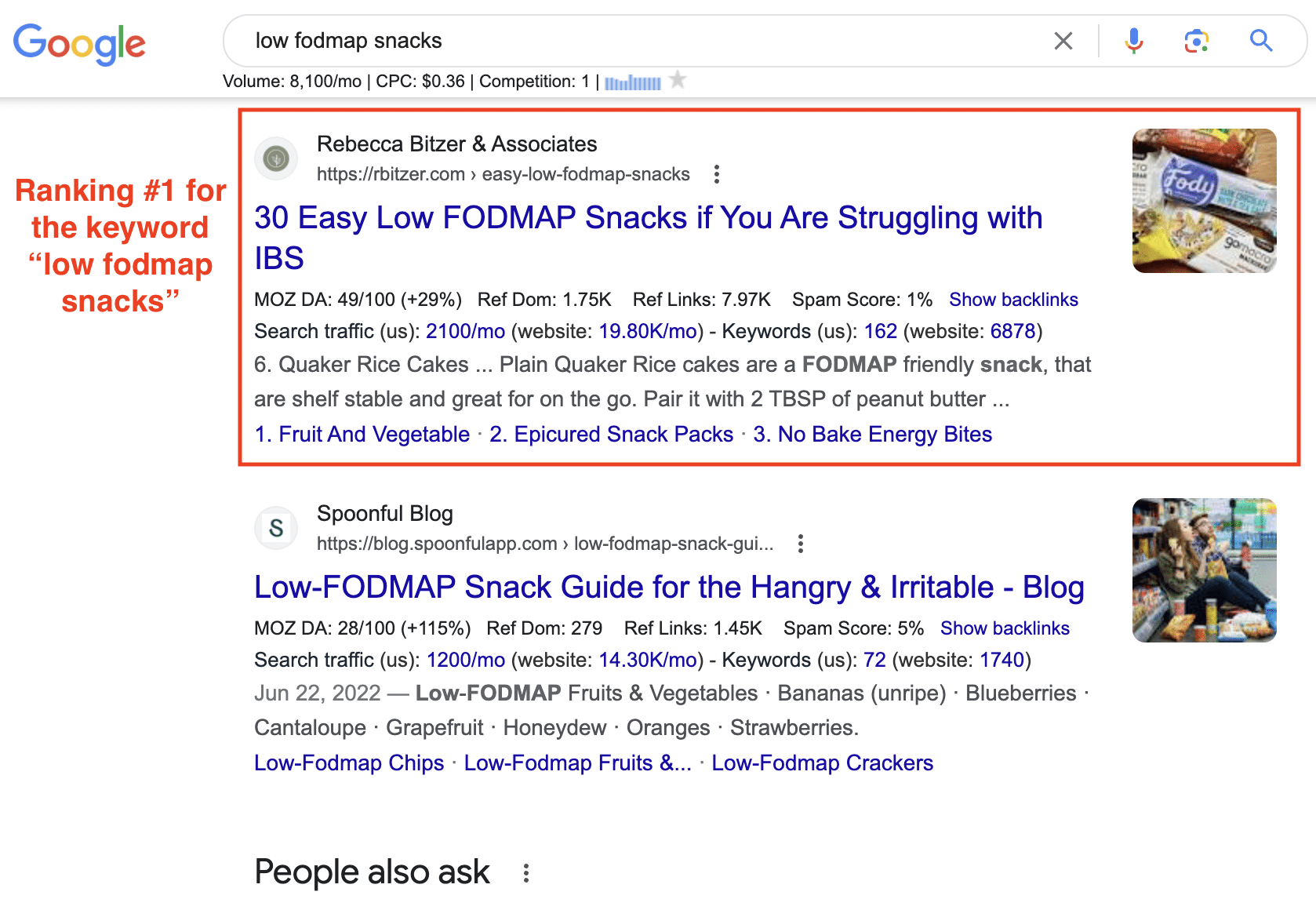
If you Google the keyword phrase “low FODMAP snacks”, you’ll see that the person ranking in the number one spot is actually a dietitian who took my course, SEO Made Simple, and is ranking in the first position because she understands SEO.
She is probably getting a decent number of people clicking to her website and reading about low-FODMAP snacks every month by ranking #1 for this keyword.
This not only allows her to attract potential clients for her private practice but also brings in ad revenue. This dietitian is a member of the ad network Mediavine and she has display ads on her website.
That means that every single time someone reads her posts, she earns money. Even if they never become a client.
Even more impressive, she’s ranking above the Monash website, which is amazing because Monash is a super authoritative brand within the low-FODMAP space.
So this is an example of what it means to “rank” for a keyword.
How to tell what your website is ranking for
So your goal is to figure out what keywords your website is ranking for right now.
Once you know your baseline, you can start implementing an actual SEO strategy and watch your traffic and website rankings improve month after month.
So if you want a quick snapshot of your top 10 keywords right now at this very moment, for free, I recommend using a tool called Semrush to find this information.
It is a premium-priced SEO tool, but you can sign up for a free account and see the top 10 keywords any website ranks for, without paying anything.
So if you create a free account and type in your website, you get this information in under 2 minutes.
Once you’ve entered your website, you’ll see this screen with lots of information about your site:
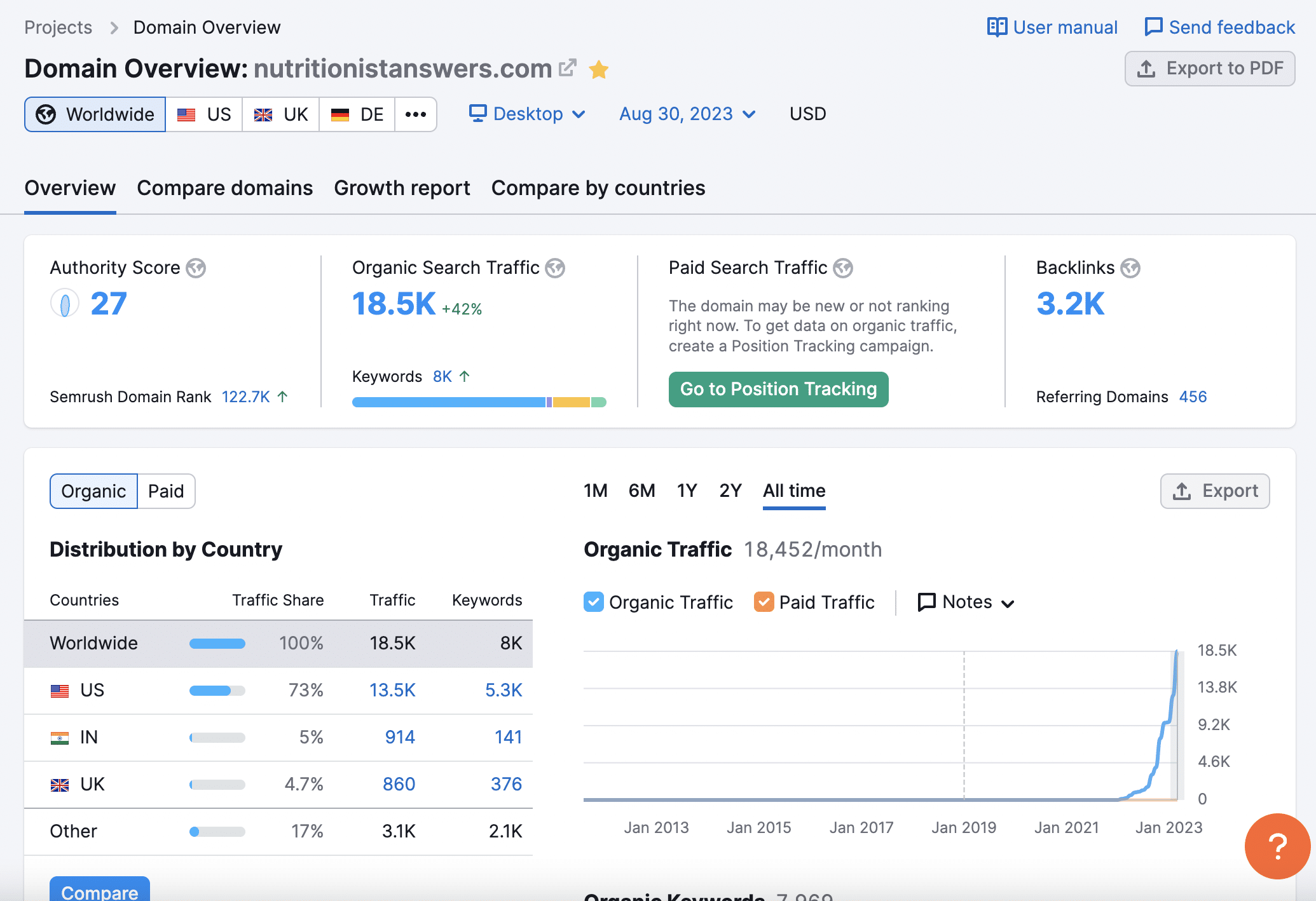
Scroll down to the section that says “Organic Research” and then click on “View Details” under “Top Organic Keywords”:
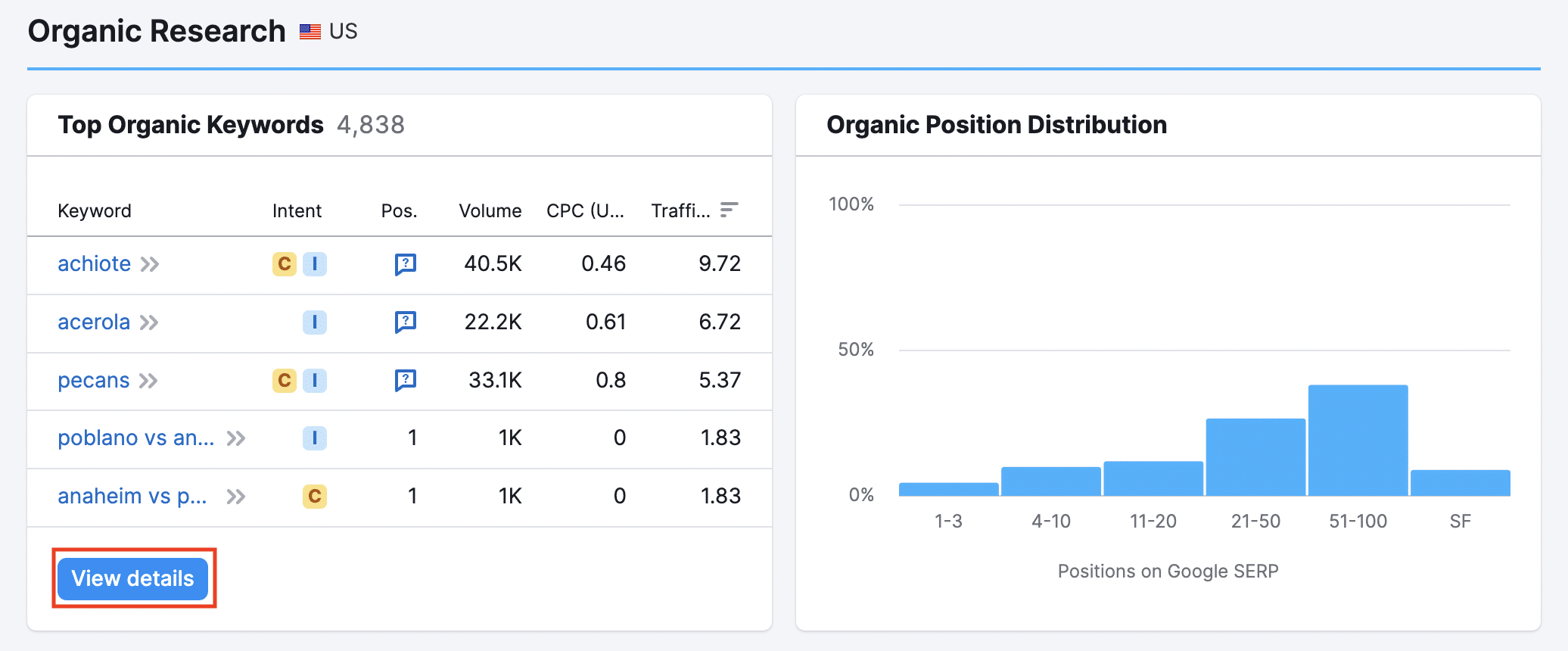
That will bring up a screen that shows you your top 10 keywords. Click the “organic” tab to see which keywords your blog posts are directly ranking for in Google.
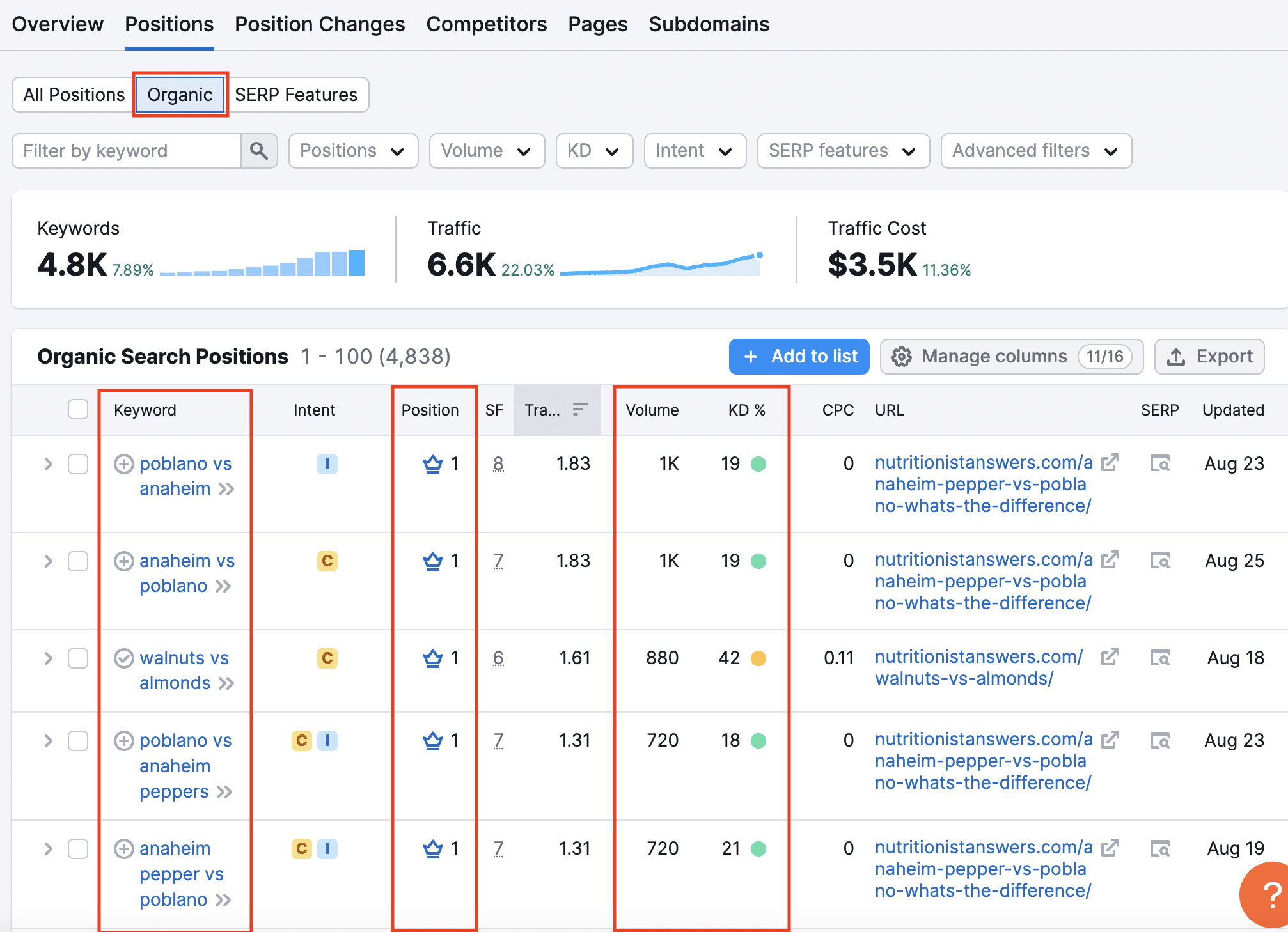
The information you want to pay attention to is:
The keywords you’re ranking for – These are the phrases people are currently typing into Google to find your website.
What position you are ranking in – Positions one through ten are the “first page” of the search results. The lower the number, the better you are ranking.
Search volume for each keyword – How many people are searching for that phrase each month.
Keyword difficulty score (KD%) – How difficult it is to rank in Google for that keyword. The lower the number, the easier it should be to rank high up in the search results.
If you haven’t focused much on SEO yet, you will probably find that your website mostly ranks for your brand name (or your name) and perhaps some random keywords that don’t have anything to do with your brand, like this:
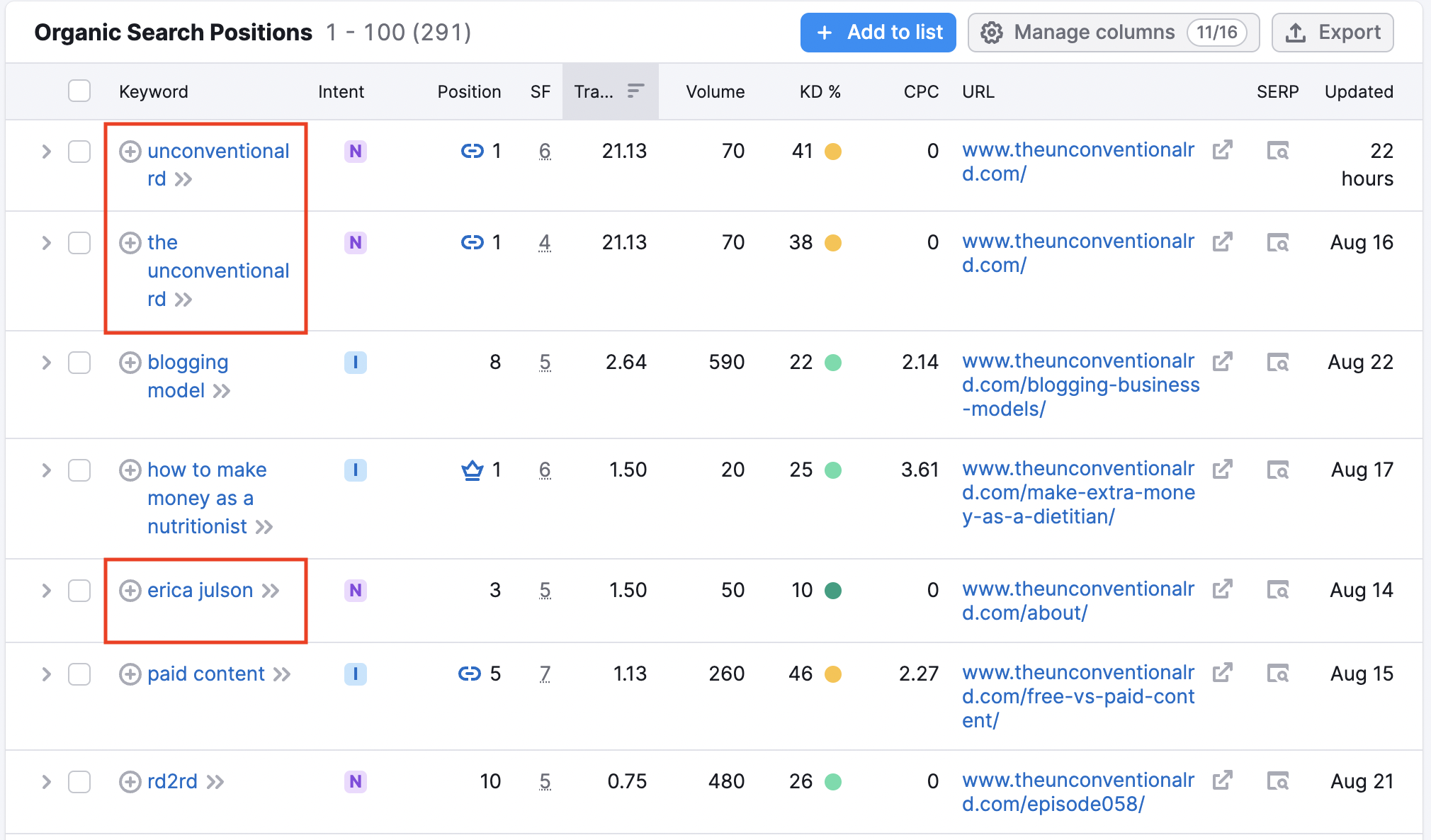
If this is what you see when you look up your top ten keywords, don’t stress too much.
While ranking mostly for branded keywords is a good place to start, it’s just that. A start.
You can do so much more by creating content around topics that your ideal customer or reader is already searching for so that they can find you when they are looking for information online.
If you want to learn more about how this works, watch my free training: How to Grow Your Audience Online (Without Spending All Day on Social Media or Paying for Ads)
The bottom line
If you’re interested in learning what your website ranks for in Google, but don’t want to take the time to set up any tracking tools, I highly recommend creating a free Semrush account to find this information.
If you have any questions about this, definitely post them in the comments below.
Erica Julson is a registered dietitian turned digital marketing pro. She has over 12 years of experience blogging and building online businesses and has taught over 900 wellness professionals inside her signature program, SEO Made Simple.



